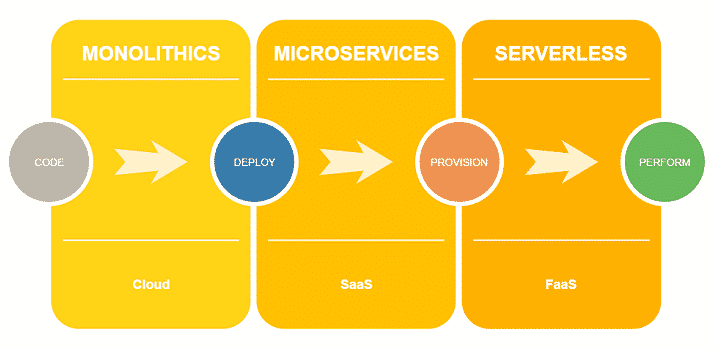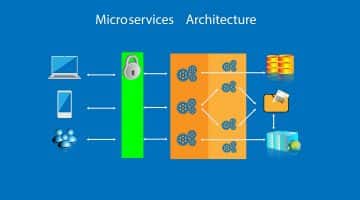It is extremely important to choose the right architecture for any product development to meet all business needs and ensure a great user experience. There are mainly three popular architectures used in the industry, and they are monolith, microservices and serverless. Before going into the actual development, the developers first choose the right architecture.
Over the last few years, the popularity of serverless architecture is on the rise. There are various serverless computing services available like Azure Functions and AWS Lambda. However, the monolith is from the beginning and still the strong one in the pack. However, there is also increasing interest in microservices where the entire application is divided into several microservices, and they interact with APIs. Let us understand these three architectures in details.
Monolith Architecture –
The majority of the applications are using the monolith structure. In fact, most of the enterprise applications are totally based on it and working great. This structure is very predictable and restricted in terms of external interactions. Therefore, it is more secure, but it can collapse altogether which is its drawback. Moreover, updating it from time to time is a headache as everything is in the large of a large block. However, the development is simple and systematic, and there is scope for very little errors.
Microservices Architecture –
There are lots who prefer microservices as it is a bunch of interconnected services. Therefore, the development process can be divided into a team or multiple teams for smooth application. They can develop, test and deploy separately and independently. The interaction among the modules takes place through APIs. Even modules can be reused, and the technology can be upgraded from time to time.
However, the drawback is its complexity. It is a real challenge of the modules to reply to the incoming requests as the overall application grows in use. Therefore, it is preferred for small to medium-sized applications that will cater to a selected group of users.
Serverless Architecture –
It is a rather infrastructure-free architecture that allows any application to run without caring about the server configuration, the programming languages, the tools, and others. So, you can write your application in any programming language and run it, and the platform will take care of the rest. This increases the possibility of scalability to the greatest extent without any issue. Therefore, any new requirement can be added instantly, and any technology can be used to achieve it.
Apart from these, the use of hybrid infrastructure is also noticeable. The hybrid architecture basically consists of microservices and serverless architecture as they are flexible. However, it is not recommended as it increases the complexity of maintaining the application effortlessly.
Deciding Based On Application –
Out of the three prime architectures, it all depends on your requirements. Three of them are completely different in their approach and therefore, deciding the same is not a problem. If your application is simple and clean, the monolith application is the best one. If your application is dividable into multiple parts and they can be independent, and you need to leverage their service outward through APIs, microservices are the best. For the rest, serverless architecture is always there, and there is a growing demand for the same.
If you are ready for a startup and you want to launch your product as soon as possible, you need to opt for the monolith. This is because monolith architecture development is simple and less time-consuming. There is no complexity of distrusted systems and even the deployment time is the least. But if you have to add new features from time to time, the monolith is not a good choice. You may have to transfer your application to microservices to avoid bottleneck situations in performance.
Moreover, adding new features and deployment will not affect the entire application, and the application will still work if a certain part is not working. However, the third option serverless architecture is more based on deployment rather than development, and that is why it is becoming popular without affecting the other architectures’ market share.
Serverless architecture takes away the headache of provisioning, scaling, maintenance as they are self-managed. There is no need for DevOps in the team. In fact, all cloud services are basically serverless architecture. But in serverless architecture, only horizontal scaling is possible. That is why, at times, you will see companies returning back to the monolith.


